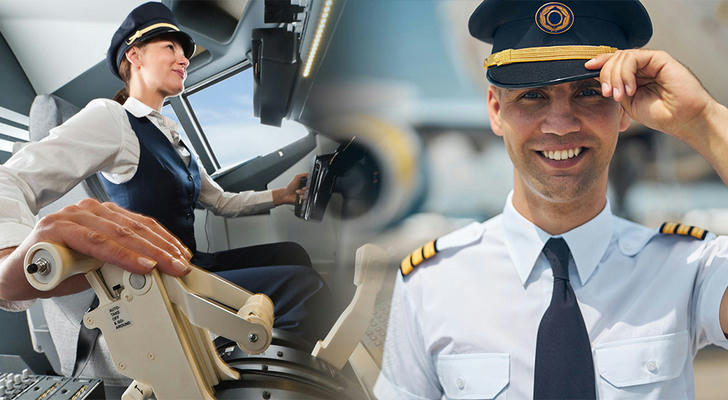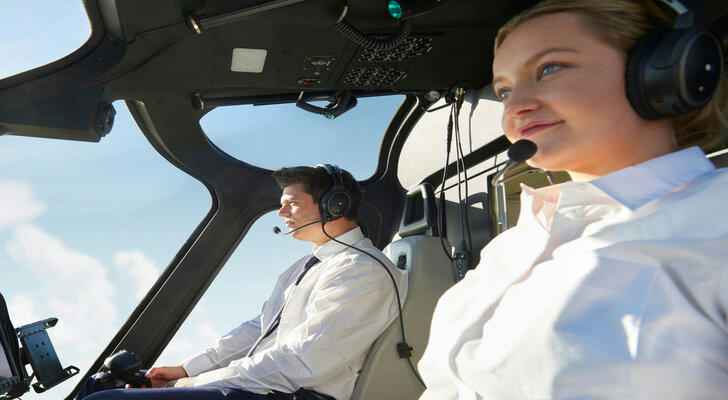Essential Skills for Becoming a Qualified Pilot: What You Need to Know
Becoming a pilot is a dream for many, but it requires more than just flying a plane. Behind every smooth takeoff and landing, pilots must master essential skills. Whether you’re aiming for a career in commercial aviation or flying privately, understanding the key skills for becoming a successful pilot is crucial. This article will focus on two important areas: flight control and emergency response.

1. Mastering Flight Control: The Core of Safe and Effective Flying
Flight control is the most fundamental skill every pilot must develop, and it’s far more complicated than it initially seems. Pilots must manage an aircraft's various systems to ensure it operates safely and efficiently. Flying a plane involves a fine balance between controlling the speed, altitude, and direction of the aircraft. Even slight mistakes can have significant consequences, which is why it’s essential to develop a deep understanding of the flight controls.
Key Flight Control Skills:
• Throttle and Power Management: One of the first skills pilots learn is how to adjust the throttle to regulate speed. Whether climbing to cruising altitude, descending for landing, or maintaining speed while cruising, controlling the aircraft’s power is crucial. Pilots need to know when and how to adjust the throttle based on different flight phases, such as takeoff, ascent, and descent.
• Yaw and Roll Control: Pilots rely on the yoke or joystick to manage the aircraft’s roll, which involves tilting the plane to the left or right. Similarly, the rudder pedals control yaw, directing the aircraft’s nose to the left or right. These controls must be coordinated to keep the plane stable during flight, especially when encountering turbulence. Pilots are trained to make adjustments based on real-time feedback from the aircraft’s movements.
• Altitude and Speed Adjustments: Maintaining proper altitude and speed is critical to flight safety. Pilots must be able to adjust these factors depending on the flight's phase. For instance, when approaching for landing, pilots must gradually reduce speed and altitude, ensuring a safe and controlled descent. On the other hand, when climbing, pilots must manage both speed and power to avoid stalling or excessive g-forces.
Data Insight: According to the FAA, pilot error remains one of the leading causes of aviation accidents, particularly during takeoff and landing. In fact, more than 45% of general aviation accidents are attributed to mistakes made while controlling the aircraft. This underscores the importance of flight control training and practice in ensuring safety.
2. Emergency Response: Quick Thinking and Calm in Crisis Situations
While controlling an aircraft during normal flight conditions is critical, what happens when things go wrong? Pilots must be prepared to handle emergencies, ranging from engine failures to unexpected turbulence or sudden weather changes. The ability to respond quickly and effectively under pressure is vital for ensuring the safety of the aircraft and everyone on board.
Key Emergency Response Skills:
• Decision-Making Under Pressure: Emergencies rarely follow a predictable pattern. Pilots must be able to think quickly and assess the situation without panic. They need to make decisions based on limited information and respond in a way that prioritizes safety. Training helps pilots develop the ability to remain calm and rational when a crisis arises.
• Handling In-Flight Emergencies: In an emergency, pilots must know how to deal with various critical situations, such as an engine failure or rapid cabin depressurization. Understanding the aircraft’s emergency protocols is essential. For instance, pilots must be trained to perform emergency descents, declare emergencies to air traffic control, and follow specific procedures to mitigate risks.
• Aircraft Systems Knowledge: Pilots need to thoroughly understand their aircraft's systems to troubleshoot issues effectively. When a technical malfunction occurs, knowing how to use backup systems or alternative procedures can be lifesaving. For example, in case of an electrical failure, knowing how to operate manual controls and access emergency power systems ensures that the plane can continue to fly safely.
Real-World Application: A study by the National Transportation Safety Board (NTSB)revealed that proper emergency training can significantly reduce accident rates. Pilots who regularly practice emergency scenarios in flight simulators tend to perform better in real-life situations, lowering accident rates by as much as 40%. This illustrates how critical it is for pilots to maintain emergency response skills through continuous training and practice.

3. Aviation Knowledge: The Scientific and Technical Foundations of Flight
Aside from practical flight control and emergency management, pilots also need a solid understanding of the scientific principles behind flight. A deep knowledge of aerodynamics, weather systems, and navigation helps pilots make informed decisions that ensure safe and efficient flying. It’s not enough to just know how to fly; pilots must understand the forces at play and how external factors, such as weather, can influence the aircraft.
Key Areas of Aviation Knowledge:
• Aerodynamics: Understanding the fundamental principles of flight, including lift, thrust, drag, and weight, is essential. Pilots must grasp how these forces interact to keep the aircraft in the air. For example, during takeoff, pilots need to ensure the plane generates enough lift to overcome its weight. Similarly, understanding how drag increases with speed helps pilots make informed decisions regarding fuel consumption and flight duration.
• Weather Awareness: Weather is one of the most significant external factors that can affect flight safety. Pilots must be able to interpret weather reports, including wind speeds, turbulence, cloud cover, and temperature, to determine whether conditions are safe for flying. This knowledge is especially crucial when flying in areas prone to storms or changing weather patterns.
• Navigation: Pilots use various tools to navigate, including GPS, radar systems, and aeronautical charts. A thorough understanding of these tools allows pilots to plan their routes and make adjustments during flight if necessary. Additionally, understanding airspace restrictions and no-fly zones is essential to avoid dangerous areas.
Data Insight: Research conducted by the University of California suggests that pilots with specialized training in meteorology are 30% less likely to make navigation errors when encountering challenging weather. This highlights the importance of comprehensive training in understanding and reacting to weather conditions.
4. Conclusion: A Lifelong Commitment to Learning and Adaptation
Becoming a qualified pilot is not a one-time achievement; it’s a continuous process of learning and improvement. Pilots must stay sharp by regularly training, practicing, and keeping up with the latest advancements in aviation technology and safety procedures. Mastering the core skills of flight control and emergency response is only the beginning. The aviation industry is constantly evolving, and successful pilots adapt to these changes while maintaining their expertise.
In conclusion, while the excitement of flying may be what initially attracts aspiring pilots, it’s the core skills of flight control, emergency management, and aviation knowledge that are essential for long-term success. By focusing on these skills and committing to ongoing learning, pilots ensure their ability to navigate the skies safely, efficiently, and confidently.
